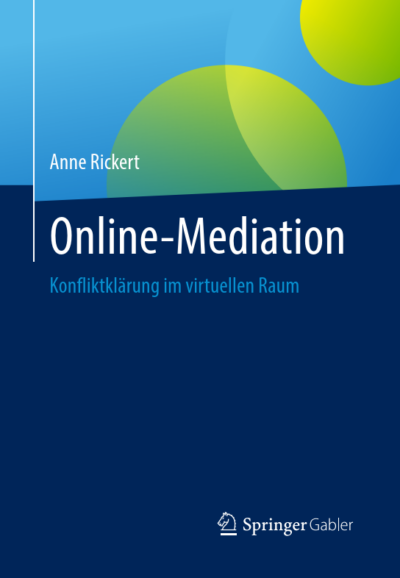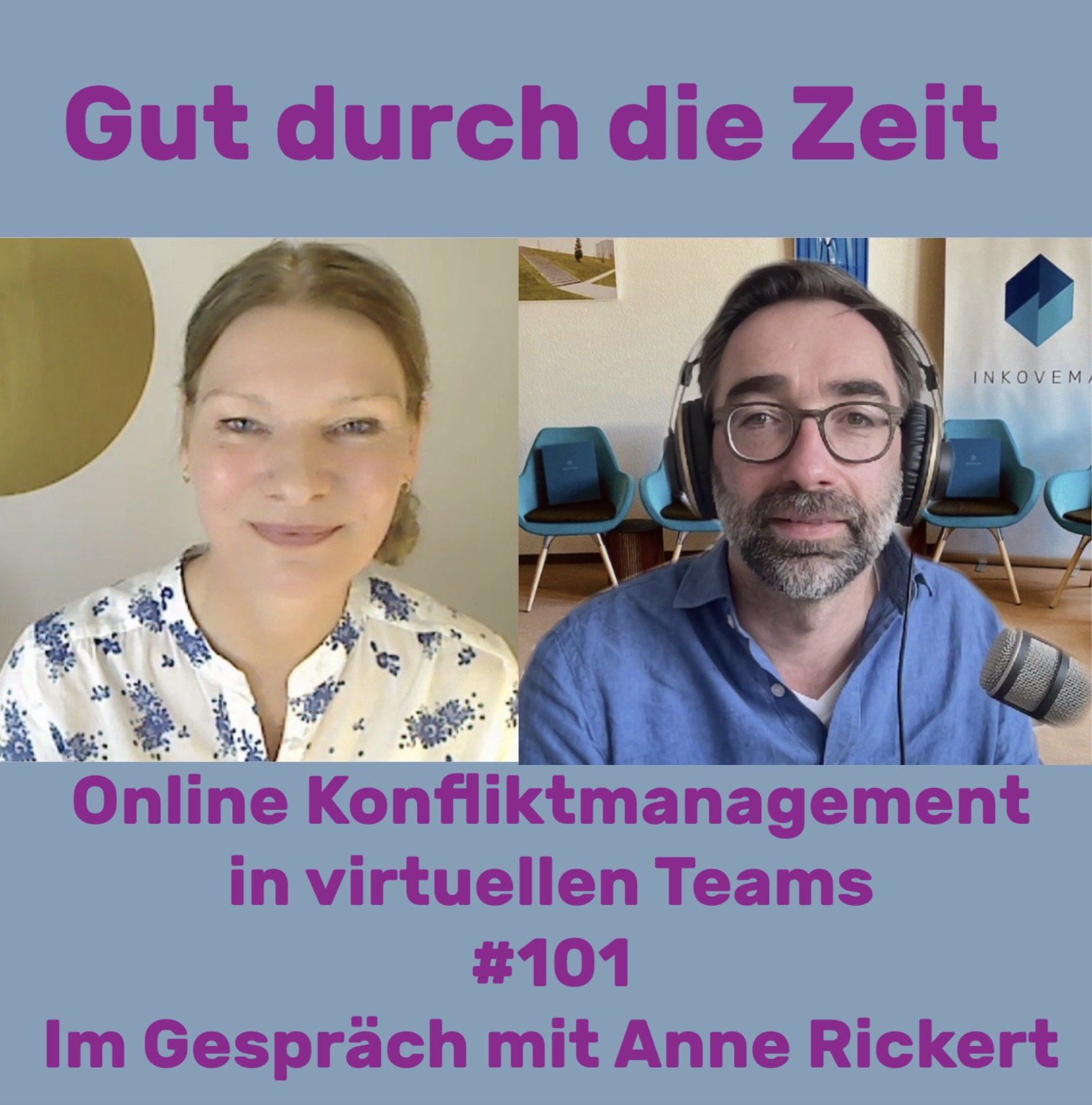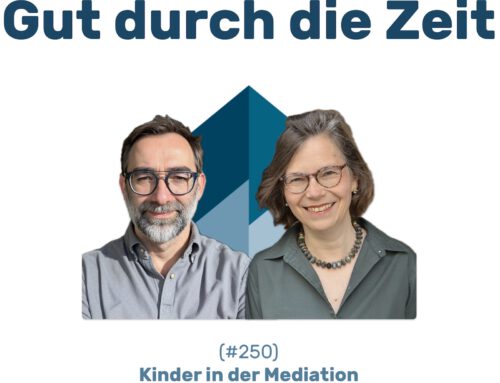INKOVEMA Podcast „Well through time“
#101 – Online conflict management in virtual teams
Recommendations for clarification processes in the online world. In conversation with Anne Rickert
Well through time. The podcast about mediation, conflict coaching and organisational consulting.
Anne Rickert: Cultural scientist and expert in empathic (online) communication Mediator and (online) trainer, founder and director of the Institute Online Mediation & Moderation IOM.
Introduction:
Today we are talking about conflicts and how to deal with them in the virtual, digitalised working world of ONLIFE.
It's not just with the pandemic that we are working together more and more virtually, leading and being led remotely, discussing, debating, arguing and remaining silent not only in digital correspondence, which has been changing our working relationships for decades (just think of the great invention of e-mail, which we hardly ever let important messages sleep through the proverbial night), but we now also have video telephony at our disposal, entire video conferences, meetings and working rounds that take place synchronously in the online world, in which we have been able to communicate with each other audiovisually for a few years with virtually no time delay.
This has an impact on the way we organise cooperation – and the balancing of differences and social collusion movements in cooperation!
And today I will be discussing the effects of this with an expert, Anne Rickert. She is a cultural scientist and mediator and a pioneer in the use of digitally mediated communication media. Her new publication on "Online Mediation – Conflict Resolution in the Digital Space" – is being published just in time for Christmas and will be of interest not only to mediators, but to all those involved in virtual resolution processes.
Contents:
- What were the beginnings of professional synchronous online communication?
- What has changed technically in recent years so that we can now all communicate with each other audiovisually in real time without any problems?
- What is different about communication in the online world?
- What do we need to look out for if we want to have emotionally intense conversations in the online world?
- Technical requirements and tools for good communication in the online world.
- Sources of misunderstanding in the digital conference room (unobserved observation (we can look at everyone in video conferences without these people or others being able to observe or notice this +++ self-observation (we see ourselves – which we generally also use!) +++ addressing via verbalised names, not via eye contact +++ lack of eye contact)
- How do we recognise conflicts and dissatisfaction in the digital world?
- How does a manager proceed in an online conflict (mediation) dialogue?
- Recommendation: Individual discussions in advance
- Visualisation
- Confidentiality
Literature reference:
Springer reference book "Online mediation. Conflict resolution in virtual space" by Anne Rickert explores the question of how we can confidently meet the challenges of online communication and utilise its potential for ourselves and our clients. Link to the publisher







Leave A Comment